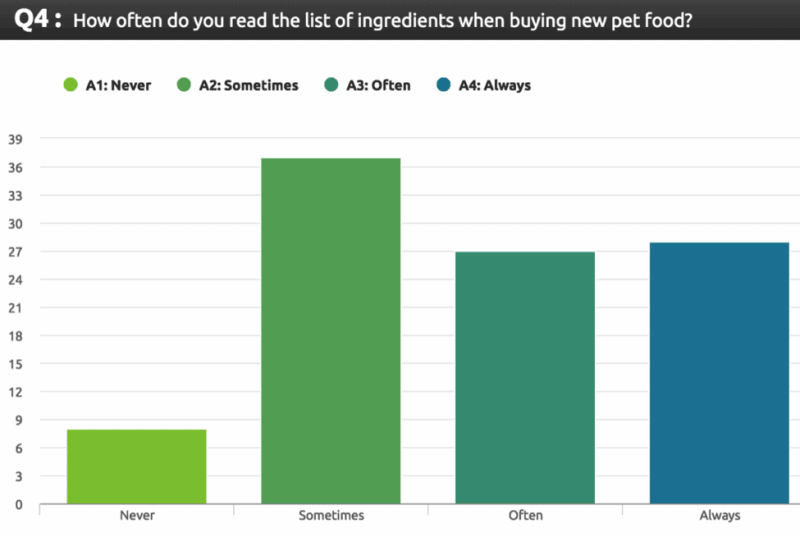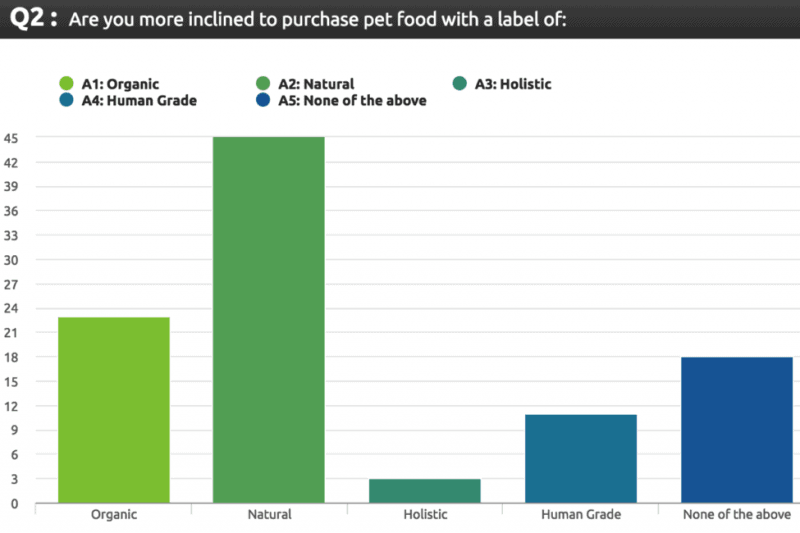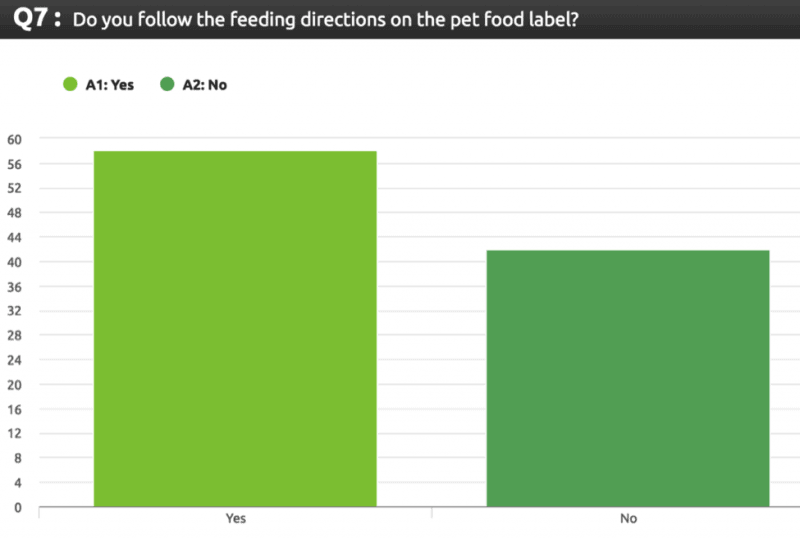Note: This is a contributor post from Nick West of Luminer, with information from their survey on pet food labels.
Anyone who’s ever owned a pet knows the frustration of trying to find the right food for your furry friend. With the number of brands available for purchase, as well as the different types of pet food, you might not know where to start. Do you buy the organic option? What about those “premium” and “gourmet” labels?
Believe it or not, those labels might actually be less helpful than you think. Studies show that you might be missing out on important information about your pet’s favorite food, especially if you’re trying a new brand.
If you’ve been thinking about trying a new brand of pet food, read on to make sure you’re getting all the right information about what you’re feeding your pet.
Nutrition Often Ignored
Just as human food contains nutrition labels and ingredients list, so does your pet’s food; unfortunately, this might not always be helpful for consumers.
While you might pay close attention to the ingredients list and nutritional information on your own food purchases, you might not be as aware of what the ingredients on your pet’s food actually mean for their nutrition and health.
However, this isn’t for lack of trying to understand; many pet owners look for information to help make their decisions but run into trouble understanding the information.
A whole 92% of pet owners say they read the ingredients list when buying new pet food, and 84% say they would be more likely to read the labels if more information regarding nutrition and ingredients were provided.

Unfortunately, pet food brands don’t make it easy for pet owners to find the most nutritious food for their pets. Looking at the ingredients list might help you get a basic understanding of what your pet is eating, but don’t rely too heavily on it.
Water weight can impact the order ingredients are listed in, which changes the perception of what your pet is actually eating.
So what about labels like “organic” or “all natural” when looking at ingredients? While pet owners commonly want to have the best information possible when shopping for pet food, common brands can sometimes use intentionally confusing labels.
What Do Labels Really Mean?
Many labels get used on pet food brands regularly, but they don’t always make picking out a brand any easier for pet owners. The standards for what makes pet food “organic” or “natural” aren’t always clear, both for humans and animals.
While some standards are enforced by the USDA and similar organizations, many chemicals can still be used on your pet’s food. Most of these are to add vitamins and minerals, but this isn’t always made clear on pet food packaging, and it can be difficult to find out what these additives do to your pet’s food.
At the end of the day, “organic” and “natural” can be good indicators of attention to detail for a pet food brand, but don’t really represent too much or make a significant difference in pet health.
Similarly, there are many words used in pet food packaging with no real meaning at all. These labels get added to pet food packaging by brands looking to increase sales to health-conscious pet owners.
Words like “human grade,” “holistic,” “gourmet,” and “premium” have no enforceable standards or implications when it comes to your pet’s food.
This means many brands will add these words to your pet’s packaging as a means to get you to purchase their pet food, and it’s surprisingly effective.
A whole 82% of pet owners are more likely to purchase food with a label of “natural” or “organic,” and 60% are more likely to purchase food with a label of “premium” or “gourmet.” Pet food brands know that customers are more likely to buy what they see as a healthier option for their pet, and so they include these labels primarily as a marketing tactic.
When shopping for pet food, take these labels with a grain of salt; it’s unlikely that they do anything to your pet food other than making it more expensive while encouraging you to buy it.

Tips To Keep Your Pet Healthy
Of course, purchasing the right pet food is essential for your pet’s health, so what is there to do when brands label their foods like this?
Knowing how your pet’s age, breed, activity, and environment impact your pet’s diet can help you select the right type of food. Check the ingredients list carefully, and do your research on what ingredients your pet should and shouldn’t be having.
Be aware that ingredients are listed by weight volume, meaning that some ingredient amounts may be increased or decreased depending on water content.

Additionally, make sure you pay very close attention to one label in particular: the directions. While most pet owners don’t read the feeding instructions on pet food, reading this label can make sure you’re feeding your pet the right amount to keep them healthy.
Not all pet food brands are created equal, and each one will likely have slightly different suggestions on how much you should be feeding your pet, as well as how often. If you still have concerns about the directions on your pet food label, talk to your vet about the ideal feeding habits for your pets.
Your veterinarians will know your pet best, and should be able to help you in finding a healthy diet for your furry friends.
It’s not always easy to make the right decisions all the time for your pets. Pet food brands will often intentionally mislead customers with fancy labels that aren’t much more than simple advertising.
Without having the right information easily and readily available, it can feel impossible trying to find the right pet food. Overall, there are a few things pet owners can do to make sure their pets are being fed well.
Pet food labels can be confusing, but by reading the directions and ingredients list carefully can help you make the best decision possible to keep your pet healthy.








Leave a Comment